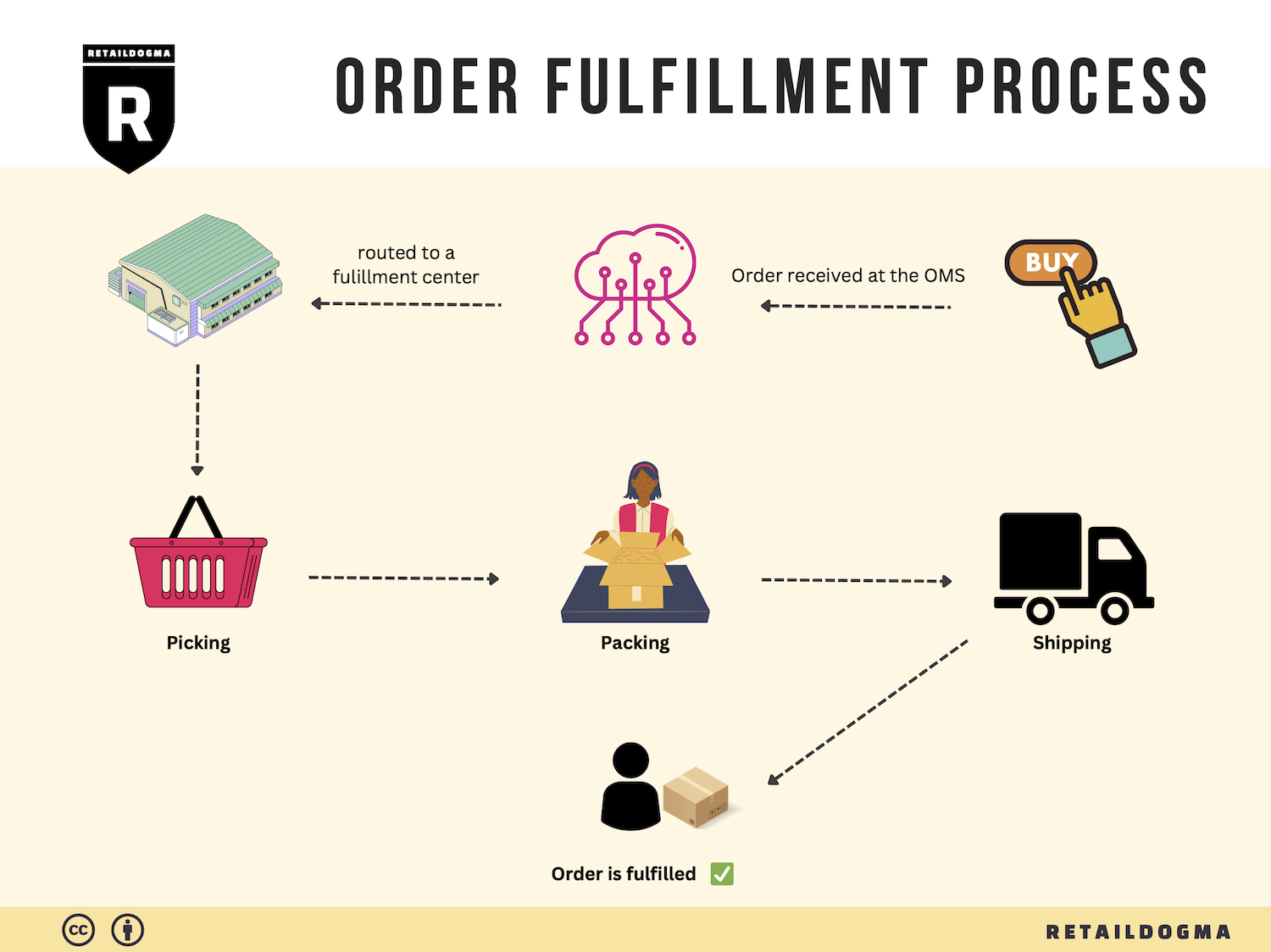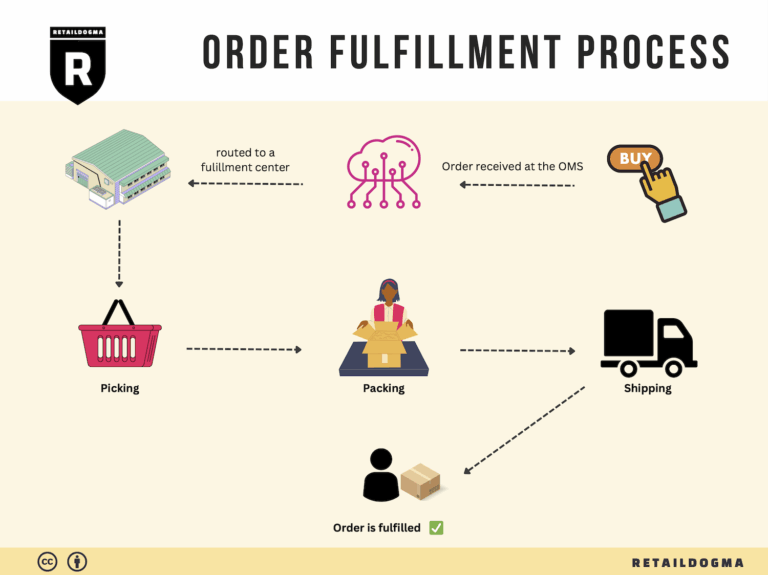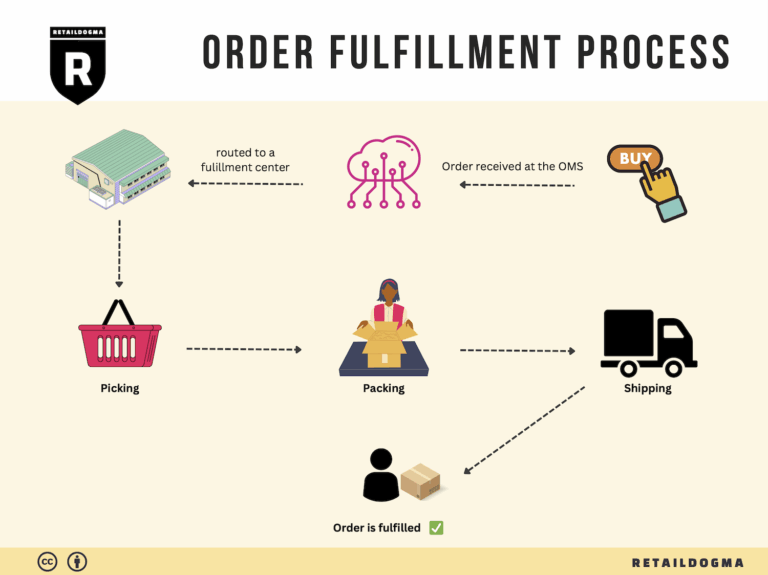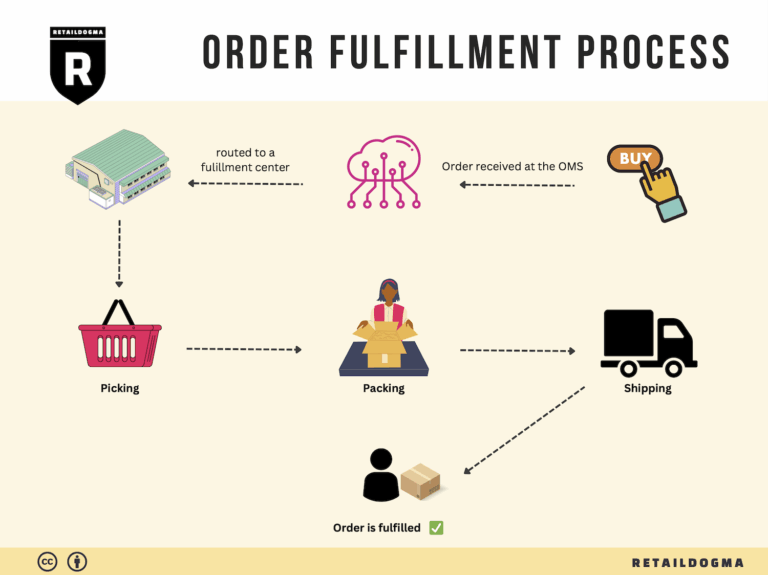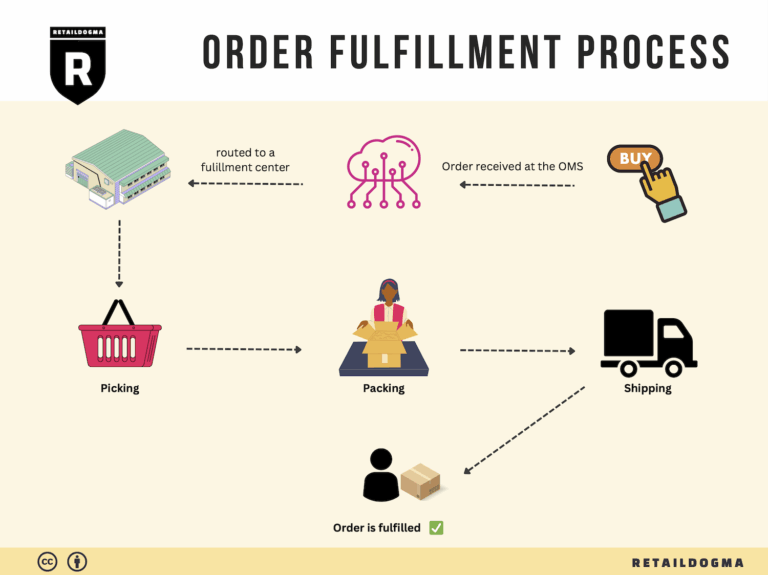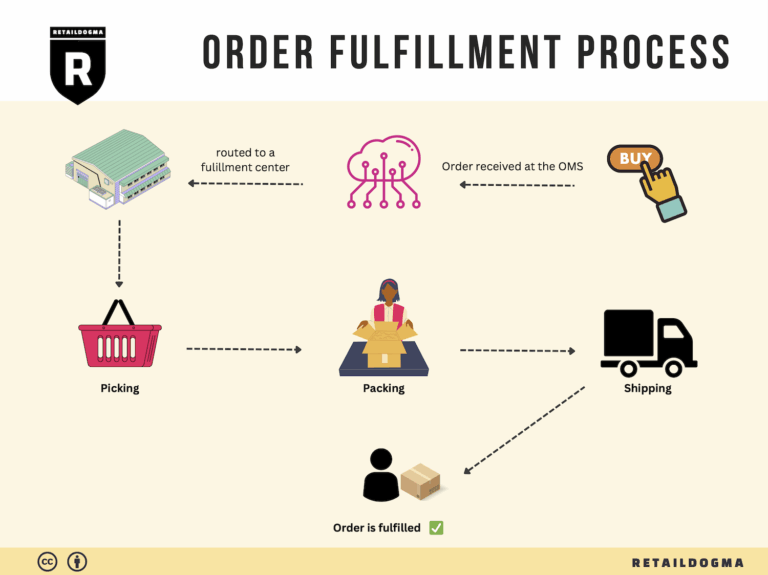What Is A Fulfillment Center? A Complete Guide (2025)
What is E-commerce Fulfillment? An Introduction for Growing Businesses
In the fast-paced world of e-commerce, many business owners find themselves grappling with the complexities of packing and shipping orders. As your sales grow, so does the volume of orders, and managing logistics can quickly become overwhelming. This is a common pain point for many entrepreneurs who want to focus on scaling their business rather than getting bogged down in the nitty-gritty of order fulfillment.
At its core, e-commerce fulfillment refers to the entire process of getting a product from your online store to your customer’s doorstep. This includes receiving inventory, storing products, picking and packing orders, and ultimately shipping them out. Understanding this process is crucial for any e-commerce business owner looking to optimize operations and enhance customer satisfaction.
This guide aims to demystify e-commerce fulfillment for growing businesses by covering several key areas. First, we will explore different fulfillment models, such as Third-Party Logistics (3PL) and Fulfillment by Amazon (FBA), highlighting their unique advantages and considerations. Knowing which model best aligns with your business goals can significantly impact your operational efficiency and customer experience.
Next, we will delve into the core services typically offered by fulfillment partners, including inventory management, order processing, shipping, and returns handling. Understanding these services will help you assess what capabilities you need from a fulfillment partner to keep your operations running smoothly.
Choosing the right fulfillment partner is another critical aspect we will discuss. Factors such as location, shipping options, technology integration, and customer service should all be considered when making this decision. A well-chosen partner can streamline your logistics and allow you to scale your business without the headaches that often accompany growth.
Lastly, we will cover pricing structures and how to evaluate the cost-effectiveness of different fulfillment options. Understanding the financial implications will enable you to make informed decisions that align with your budget and growth plans.
Ultimately, this guide’s goal is to empower e-commerce businesses to make smart, strategic decisions about their logistics and fulfillment processes. By equipping you with the knowledge and insights necessary to navigate the complexities of e-commerce fulfillment, we aim to help you focus on what truly matters: growing your business and delighting your customers.
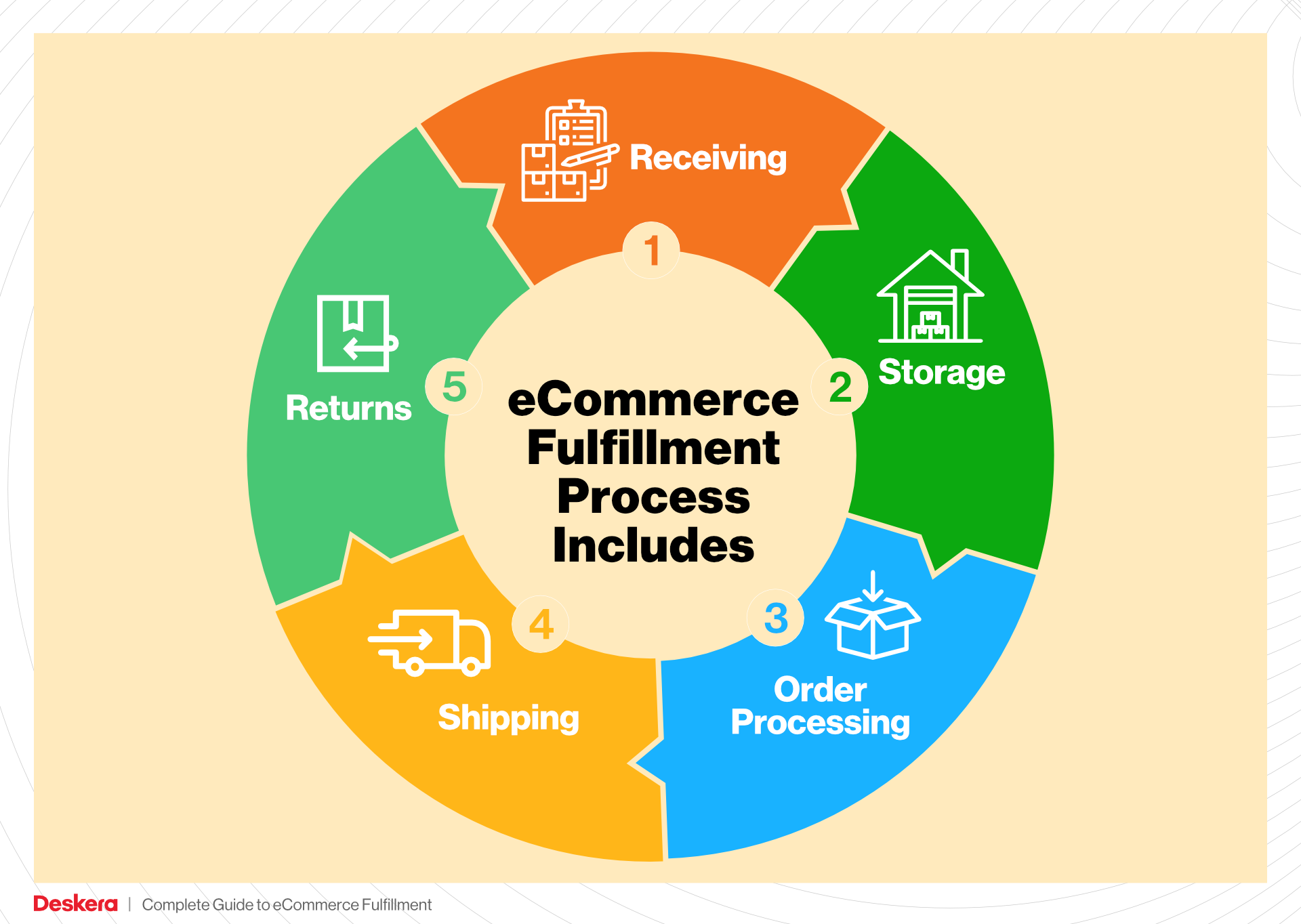
What You’ll Learn In This Guide
- What is E-commerce Fulfillment? An Introduction for Growing Businesses
- The Order Fulfillment Process: From ‘Buy’ Button to Customer’s Door
- Comparing Fulfillment Models: In-House vs. 3PL vs. Dropshipping
- A Deep Dive into Amazon FBA: Pros, Cons, and Who It’s For
- Core Services Offered by Fulfillment Centers
- How to Choose a Fulfillment Partner: A 6-Point Checklist
- Understanding Fulfillment Pricing: A Breakdown of Common Fees
- Frequently Asked Questions (FAQs) about Fulfillment
- Conclusion: Is Outsourcing Fulfillment the Right Move for Your Business?
- Important Disclaimer
The Order Fulfillment Process: From ‘Buy’ Button to Customer’s Door
1. Receiving Inventory
The first step in the order fulfillment process is receiving inventory. This involves accepting shipments of products from suppliers or manufacturers, verifying their accuracy, and logging them into the inventory management system. Upon arrival, each product is checked against the purchase order to ensure that the correct quantities and items have been delivered. This step is crucial because any discrepancies at this stage can lead to stockouts or overstock situations later on.
A key term associated with this step is SKU (Stock Keeping Unit). Each product is assigned a unique SKU, which helps in tracking inventory levels and managing stock efficiently. Accurate receiving procedures help maintain a reliable inventory count, which is essential for fulfilling customer orders promptly and effectively.
2. Warehouse Storage
Once the inventory has been received and verified, the next step is warehouse storage. Products are organized and stored in designated locations within the warehouse. Proper storage is critical for efficient order fulfillment, as it ensures that items are easily accessible when orders come in. The layout of the warehouse should facilitate smooth movement and minimize the time it takes to locate products.
An important concept in this step is ABC Analysis, a method of categorizing inventory based on importance. Items are classified into three categories: A (high-value items), B (moderate-value items), and C (low-value items). By prioritizing storage locations for A items closer to the packing area, businesses can enhance picking efficiency and reduce order fulfillment time.
3. Order Picking
Order picking is the process of selecting items from the warehouse to fulfill customer orders. When an order is placed, the fulfillment system generates a pick list, which details the items and their locations in the warehouse. Warehouse staff use this list to gather the required products.
This step is vital because it directly impacts order accuracy and fulfillment speed. Efficient picking processes can significantly reduce the time from order placement to shipment. Techniques such as batch picking, where multiple orders are picked simultaneously, or zone picking, where different pickers are assigned to specific sections of the warehouse, can enhance productivity and accuracy in this phase.
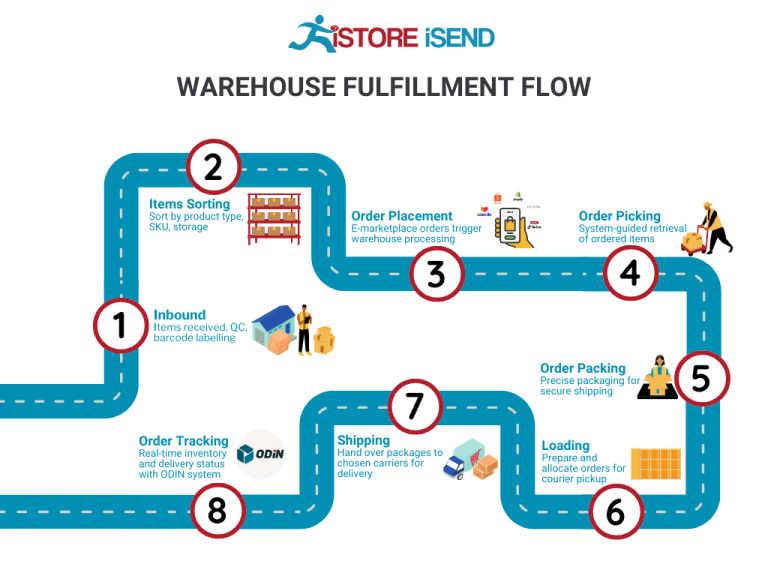
4. Order Packing
After items have been picked, they move to the order packing stage. Here, the products are carefully packed into boxes or envelopes, often accompanied by packing slips or invoices. The packing process is essential for ensuring that items are protected during transit and that the customer receives exactly what they ordered.
A critical aspect of this step is packaging optimization. This involves selecting the right size and type of packaging to minimize shipping costs and reduce the risk of damage. Proper packing also enhances the unboxing experience for customers, which can contribute to brand loyalty. Additionally, businesses may choose to include branded inserts or promotional materials to further engage customers.
5. Shipping & Delivery
The final step in the order fulfillment process is shipping and delivery. Once the order is packed, it is handed over to a shipping carrier, such as FedEx, DHL, or a regional courier service. This step is crucial because it determines how quickly and reliably the product reaches the customer. Timely shipping is a key factor in customer satisfaction and can significantly influence repeat business.
A key term in this stage is last-mile delivery. This refers to the final leg of the shipping process, where the package is delivered from a distribution center to the customer’s doorstep. Efficient last-mile delivery solutions, including route optimization and real-time tracking, can enhance the customer experience and reduce shipping costs.
In conclusion, understanding and optimizing each step of the order fulfillment process is essential for e-commerce businesses looking to scale their operations. By focusing on these five critical steps—receiving inventory, warehouse storage, order picking, order packing, and shipping & delivery—business owners can create a streamlined and efficient fulfillment operation that meets customer expectations and drives growth.
Comparing Fulfillment Models: In-House vs. 3PL vs. Dropshipping
Fulfillment Model Comparison
| Model | Who Handles Inventory | Best For (Business Stage) | Key Advantage | Key Disadvantage |
|---|---|---|---|---|
| In-House Fulfillment | The business owner | Established businesses | Full control over inventory and processes | High overhead costs |
| Third-Party Logistics (3PL) | Third-party provider | Growing businesses | Scalability and reduced operational burden | Less control over fulfillment process |
| Dropshipping | Supplier/fulfillment partner | Startups and small businesses | Low upfront investment and risk | Lower profit margins and quality control challenges |
In-House Fulfillment
In-house fulfillment involves a business managing its own inventory and handling all logistics internally. This model typically requires a physical warehouse where products are stored, picked, packed, and shipped directly to customers. Businesses that adopt in-house fulfillment benefit from complete control over their inventory management, allowing for tailored operations that can adapt quickly to changes in demand or customer preferences. This model is particularly well-suited for established businesses that have the capital and infrastructure to support the overhead costs associated with warehousing and staffing. However, the disadvantages include significant upfront investment in inventory, real estate, and labor, as well as ongoing operational costs. Additionally, it requires a robust logistics strategy and may lead to inefficiencies if not managed effectively.
Third-Party Logistics (3PL)
Third-party logistics (3PL) providers offer a comprehensive solution for businesses looking to outsource their fulfillment processes. In this model, a third-party company manages inventory storage, order processing, shipping, and sometimes even returns management. This approach is ideal for growing businesses that want to scale quickly without the burden of managing logistics internally. By leveraging a 3PL, businesses can benefit from established networks, optimized shipping rates, and advanced technology solutions that streamline operations. The key advantage of 3PL is the ability to focus on core business activities, such as marketing and sales, while leaving logistics to experts. However, a notable disadvantage is the reduced control over the fulfillment process, which can affect customer experience if not aligned with the business’s standards.
Dropshipping
Dropshipping is a fulfillment model that allows e-commerce businesses to sell products without holding any inventory. Instead, when a customer places an order, the business purchases the item from a third-party supplier who then ships it directly to the customer. This model is particularly appealing for startups and small businesses, as it requires minimal upfront investment and eliminates the risks associated with excess inventory. Entrepreneurs can test various products and niches without the need for significant financial commitments. Additionally, dropshipping providers, such as Gray Poplar, offer services like product sourcing, custom branding, and quality control, which can enhance the overall customer experience. However, the key disadvantages include lower profit margins due to reliance on supplier pricing and potential quality control issues, as businesses have less oversight over the products being shipped. Additionally, shipping times can be longer, which may affect customer satisfaction.
Conclusion
Choosing the right fulfillment model is crucial for scaling an e-commerce business. In-house fulfillment provides maximum control and customization but comes with high costs and operational challenges. Third-party logistics offer a balanced solution for businesses looking to grow without managing logistics directly, although it can lead to a loss of control. Finally, dropshipping serves as an accessible entry point for new businesses, allowing them to minimize risk and investment, but it also presents challenges in terms of profit margins and product quality. By understanding the strengths and weaknesses of each model, business owners can make informed decisions that align with their operational goals and market demands.
A Deep Dive into Amazon FBA: Pros, Cons, and Who It’s For
Understanding Fulfillment by Amazon (FBA)
Fulfillment by Amazon (FBA) is a service provided by Amazon that allows sellers to store their products in Amazon’s fulfillment centers. Amazon then takes care of storage, packaging, shipping, and customer service, enabling sellers to focus on growing their businesses. This service is particularly appealing for e-commerce entrepreneurs looking to leverage Amazon’s vast logistics network and customer base.
How FBA Works
-
Setup: Sellers begin by creating an Amazon seller account and enrolling in the FBA program. They list their products on Amazon and specify that they will be using FBA.
-
Inventory Shipment: Sellers prepare their products for shipment to Amazon’s fulfillment centers. This includes packaging and labeling products according to Amazon’s guidelines.
-
Storage: Once the products arrive at the fulfillment center, Amazon takes over. The items are stored until they are sold.
-
Order Fulfillment: When a customer places an order for a product fulfilled by FBA, Amazon picks, packs, and ships the product directly to the customer. They also handle all aspects of customer service, including returns.
-
Tracking and Reporting: Sellers can track their inventory and sales through the Amazon Seller Central dashboard, which provides insights into sales performance and inventory levels.
Pros of FBA
1. Prime Eligibility
One of the most significant advantages of FBA is that products become eligible for Amazon Prime. This means that Prime members can receive free two-day shipping, increasing the likelihood of sales. Prime eligibility is a powerful marketing tool, as many customers prefer to shop for Prime-eligible products.
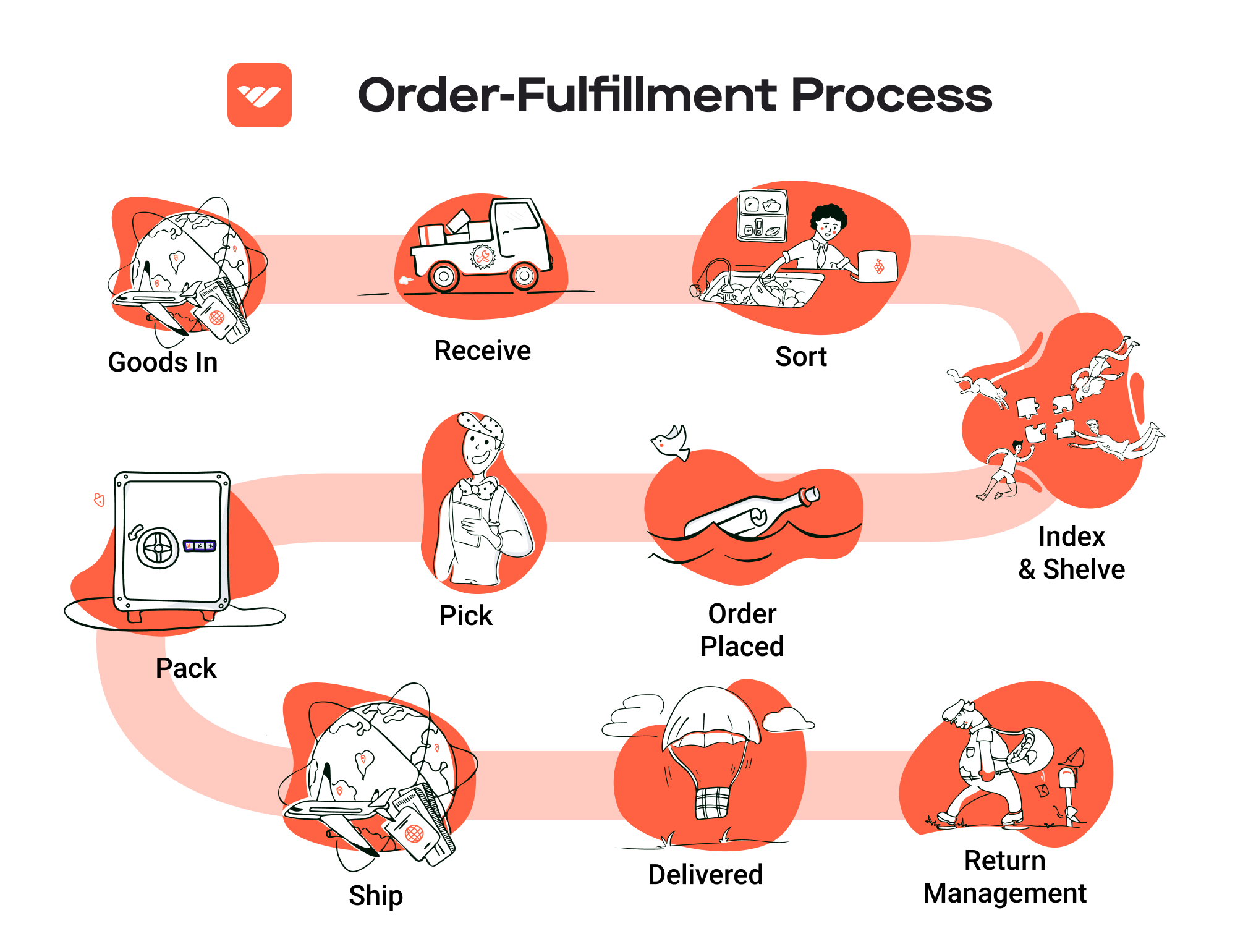
2. Customer Trust
Amazon has built a reputation for reliability and customer service. When customers see the “Fulfilled by Amazon” label, they often feel more secure making a purchase, knowing that Amazon will handle shipping and returns. This trust can lead to higher conversion rates and increased sales.
3. Multi-Channel Fulfillment
FBA allows sellers to fulfill orders from multiple sales channels, not just Amazon. Sellers can use FBA to fulfill orders from their own websites, eBay, and other platforms, streamlining logistics and inventory management under one system.
4. Scalability
FBA provides the infrastructure needed for businesses to scale quickly. Sellers do not have to worry about managing logistics, which allows them to focus on product development, marketing, and expanding their product lines.
5. Comprehensive Customer Service
Amazon handles all customer service inquiries related to FBA orders, including returns and refunds. This alleviates the burden on sellers, allowing them to dedicate more time to their core business functions.
Cons of FBA
1. High Fees
While FBA can simplify logistics, it comes at a cost. Amazon charges various fees, including storage fees and fulfillment fees. These fees can add up quickly, especially for sellers with low-margin products or those who have slow-moving inventory.
2. Strict Inventory Rules
Amazon has strict guidelines regarding inventory management. Sellers must ensure that their products are compliant with Amazon’s policies, including labeling and packaging requirements. Failure to comply can result in additional fees or penalties.
3. Commingling Risks
FBA utilizes a commingling process where products from different sellers are stored together. This can lead to issues if a seller’s inventory is mixed with defective or damaged products from other sellers. In such cases, it can be challenging to trace the source of the problem, which may impact customer satisfaction.
4. Limited Control Over Shipping
While Amazon’s logistics network is extensive, sellers have limited control over shipping times and methods. This can be a concern for sellers who want to maintain specific shipping standards or who are dealing with perishable goods.
5. Inventory Management Challenges
Sellers are required to forecast demand accurately to avoid excess storage fees or stockouts. Managing inventory levels can be challenging, especially for new sellers who may not have sufficient data to predict sales accurately.
Who is FBA Best For?
Fulfillment by Amazon is best suited for:
-
Established Sellers: Businesses that already have a product line and are looking to scale quickly can benefit from the extensive logistics network and customer trust that FBA offers.
-
Small to Medium-Sized Businesses: Sellers who want to minimize the time spent on logistics and customer service can leverage FBA to focus on marketing and product development.
-
Sellers with High-Turnover Products: Products that have a high sales velocity can absorb the costs associated with FBA fees, making the service more economical.
-
Brands Looking to Increase Visibility: New brands or products that need visibility can benefit from being part of the Amazon ecosystem, gaining exposure to millions of potential customers.
-
Multi-Channel Sellers: Businesses that sell on multiple platforms can streamline their operations by utilizing FBA for order fulfillment across different channels.
In conclusion, Fulfillment by Amazon offers a robust solution for e-commerce sellers looking to streamline their logistics and enhance customer satisfaction. However, it is essential to weigh the pros and cons carefully to determine if FBA aligns with your business model and goals.
Core Services Offered by Fulfillment Centers
Inventory Management & Warehousing
Inventory management and warehousing are foundational services provided by fulfillment centers, ensuring that e-commerce businesses can operate efficiently without the overhead of maintaining their own storage facilities. This service involves the systematic tracking of inventory levels, orders, sales, and deliveries. Fulfillment centers utilize sophisticated software systems to monitor stock in real-time, allowing businesses to make informed decisions based on current inventory levels.
Benefits:
1. Reduced Costs: By outsourcing warehousing, e-commerce businesses can eliminate the costs associated with leasing or owning a warehouse, as well as the expenses related to utilities, staffing, and maintenance.
2. Scalability: As a business grows, fulfillment centers offer the flexibility to scale operations without the need for significant capital investment in additional space or resources. This allows businesses to adapt quickly to market demands.
3. Minimized Stockouts and Overstocks: With advanced inventory tracking, fulfillment centers help prevent stockouts and overstocks by providing timely insights into inventory levels, ensuring that businesses can replenish stock efficiently and maintain optimal inventory levels.
Pick and Pack Services
Pick and pack services are critical for the fulfillment process, where fulfillment centers take responsibility for selecting ordered products from the warehouse (picking) and packaging them for shipment (packing). This process is typically automated to improve efficiency, but it can also involve manual checks to ensure accuracy, especially for high-value or sensitive items.
Benefits:
1. Efficiency in Order Processing: Fulfillment centers streamline the picking and packing process, allowing for faster order processing and shipping. This efficiency is crucial in meeting customer expectations for quick delivery times.
2. Accuracy: By employing systematic methods for picking and packing, fulfillment centers significantly reduce the likelihood of errors in order fulfillment. This accuracy enhances customer satisfaction and minimizes return rates due to incorrect items being shipped.
3. Custom Packaging Options: Many fulfillment centers offer custom packaging solutions, allowing e-commerce businesses to create a unique unboxing experience for their customers. This can strengthen brand identity and improve customer loyalty.
Kitting and Assembly
Kitting and assembly refer to the process of grouping individual items together into a single package or assembling multiple components into a finished product before shipping. This service is particularly valuable for e-commerce businesses that sell products requiring assembly or those that want to create bundled offers (kits).
Benefits:
1. Enhanced Product Offerings: Kitting allows businesses to offer bundled products, which can encourage higher sales volumes and improve customer satisfaction. For example, a company selling electronics might bundle a device with accessories, increasing perceived value.
2. Simplified Logistics: By outsourcing kitting and assembly to fulfillment centers, businesses can streamline their logistics processes. This reduces the complexity of managing multiple SKUs and simplifies inventory management.
3. Time Savings: Kitting and assembly can be time-consuming tasks. By delegating these responsibilities to a fulfillment center, businesses can focus on core activities such as marketing and customer service, leading to overall operational efficiency.
Returns Management (Reverse Logistics)
Returns management, also known as reverse logistics, is the process of handling product returns from customers back to the fulfillment center. This service is vital for maintaining customer satisfaction and ensuring a smooth return process. Fulfillment centers manage the entire returns process, including inspecting returned items, restocking, and processing refunds or exchanges.
Benefits:
1. Improved Customer Experience: A hassle-free return process enhances customer satisfaction and builds trust in the brand. Fulfillment centers often provide clear return policies and easy-to-follow procedures, making the experience seamless for customers.
2. Cost Efficiency: By efficiently managing returns, fulfillment centers can minimize losses associated with returned products. Items that can be restocked are quickly processed, reducing the time they spend in the returns queue and allowing businesses to recover revenue faster.
3. Data Insights: Returns management provides valuable insights into customer behavior and product performance. Analyzing return data can help businesses identify trends, understand customer preferences, and make informed decisions about product offerings and quality control.
By leveraging these core services offered by fulfillment centers, e-commerce businesses can streamline their operations, enhance customer satisfaction, and ultimately drive growth. As businesses scale, partnering with a reliable fulfillment center can be a strategic move that allows them to focus on their core competencies while ensuring efficient logistics and fulfillment processes.
How to Choose a Fulfillment Partner: A 6-Point Checklist
Location & Warehouse Network
Importance:
The geographical location of your fulfillment partner’s warehouses can significantly impact your shipping times, costs, and overall customer satisfaction. A strategically located warehouse network allows for faster delivery to your target markets and can reduce shipping expenses.
Questions to Ask:
– Where are your warehouses located, and how do they align with my customer base?
– Do you have facilities in key regions to support my shipping needs (e.g., domestic vs. international)?
– How do you manage logistics for orders going to various locations?
Technology & Integrations
Importance:
In today’s digital age, the technology used by your fulfillment partner is critical for seamless operations. Efficient technology can streamline order processing, inventory management, and customer communication, thereby enhancing your overall service delivery.
Questions to Ask:
– What software platform do you use for inventory and order management?
– Can your system integrate with my existing e-commerce platforms (e.g., Shopify, WooCommerce, Amazon)?
– Do you provide real-time tracking capabilities for both me and my customers?
Specializations (e.g., Cold Storage, Oversized Items)
Importance:
Depending on your product range, you may require specialized fulfillment services. For instance, if you sell perishable goods, you need a partner with cold storage capabilities. Similarly, oversized or fragile items may require specific handling and storage conditions.
Questions to Ask:
– What types of products do you specialize in handling?
– Do you have the infrastructure to accommodate specialized needs such as temperature control or oversized items?
– Can you provide examples of how you’ve successfully managed fulfillment for similar products?
Scalability & Capacity
Importance:
As your business grows, your fulfillment partner must be able to scale operations accordingly. A partner with adequate capacity can handle increased order volumes without compromising service quality, allowing you to focus on growth strategies.
Questions to Ask:
– What is your current capacity for order fulfillment, and how do you manage peak seasons?
– How quickly can you scale up services if my order volume increases significantly?
– Do you have contingency plans in place for unexpected surges in demand?
Pricing and Contracts
Importance:
Understanding the pricing structure and contract terms is essential to ensure that your partnership remains financially viable as your business grows. Transparent pricing helps you avoid hidden fees that can erode your margins.
Questions to Ask:
– What is your pricing model (e.g., per order, monthly fees, storage costs)?
– Are there any additional fees I should be aware of, such as for returns or special handling?
– What are the terms of the contract, and is there flexibility for renegotiation as my business evolves?
Customer Support & Reviews
Importance:
Reliable customer support is crucial for resolving issues quickly and maintaining smooth operations. Additionally, examining reviews and testimonials can provide insight into the partner’s reliability and service quality.
Questions to Ask:
– What level of customer support do you offer (e.g., dedicated account manager, 24/7 support)?
– How do you handle order discrepancies or fulfillment errors?
– Can you provide references or case studies from other businesses similar to mine?
Final Considerations
Choosing the right fulfillment partner is a significant decision that can affect your business’s efficiency and customer satisfaction. By utilizing this checklist, you can make a more informed choice that aligns with your operational needs and growth objectives. The right partner not only alleviates logistical burdens but also contributes to your overall success in the competitive e-commerce landscape.
Understanding Fulfillment Pricing: A Breakdown of Common Fees
Initial Setup Fees
When partnering with a fulfillment service like Gray Poplar Dropshipping, one of the first costs you might encounter is the initial setup fee. This fee typically covers the administrative and technical work required to establish your account, integrate your e-commerce platform, and set up necessary systems for order processing.
How It’s Calculated: Initial setup fees can vary widely depending on the complexity of your business model and the specific services you require. Generally, these fees range from a few hundred to several thousand dollars. Factors influencing the fee include the number of product SKUs, the level of customization needed for branding, and the integration with your online store.
Receiving Fees
Receiving fees are charged when your products arrive at the fulfillment center. This fee covers the labor and resources needed to unload, inspect, and log incoming inventory into the warehouse management system.
How It’s Calculated: These fees are usually assessed per shipment or per pallet. For example, you might pay a flat fee for each incoming shipment or a variable fee based on the number of pallets or boxes received. The rates can vary depending on the size and weight of the shipment as well as the complexity of the receiving process.
Storage Fees (per pallet/bin)
Once your inventory is stored at the fulfillment center, storage fees come into play. These fees are charged for the space your products occupy in the warehouse.
How It’s Calculated: Storage fees can be structured in a few different ways: per pallet, per cubic foot, or per bin. Most fulfillment centers, including Gray Poplar, charge a monthly fee based on the volume of space your products take up. For instance, if you store one pallet of goods, you might pay a flat monthly fee. This fee can also change based on the time of year; for example, you may face higher rates during peak seasons when demand for storage space increases.
Pick & Pack Fees (per item/order)
Pick and pack fees are incurred every time an order is processed. This fee includes the labor involved in picking items from storage, packing them securely, and preparing them for shipping.
How It’s Calculated: Pick and pack fees are typically charged per item or per order. For instance, you might pay a fixed fee for the first item and a smaller fee for each additional item in the same order. Some fulfillment centers also offer tiered pricing based on order volume; the more orders you process, the lower your per-order fees may become.
Shipping Fees
Shipping fees are one of the most significant costs in the fulfillment process. These fees cover the transportation of your products from the fulfillment center to your customers.
How It’s Calculated: Shipping fees can vary based on several factors, including the shipping method (standard, expedited, international), the weight and dimensions of the package, and the destination. Fulfillment services often have partnerships with various shipping carriers (e.g., FedEx, DHL) and can provide discounted rates. It’s essential to understand whether shipping fees are included in your pick and pack fees or charged separately.
Tips for Getting an Accurate Quote
-
Understand Your Needs: Before reaching out for a quote, evaluate your business’s specific needs, including order volume, product types, and storage requirements. This understanding will help you provide accurate information to the fulfillment service.
-
Request a Detailed Breakdown: Ask for a detailed quote that outlines each fee type (setup, receiving, storage, pick & pack, and shipping). A transparent breakdown will help you understand the overall cost structure.
-
Consider Seasonal Fluctuations: Be aware that some fees may vary during peak seasons (e.g., holidays). Discuss how these fluctuations might affect your costs.
-
Negotiate Rates: If your business anticipates significant volume, don’t hesitate to negotiate rates. Many fulfillment centers are willing to offer discounts based on projected order quantities.
-
Compare Multiple Providers: It’s advisable to obtain quotes from several fulfillment services to compare pricing and services. This will help you identify the best fit for your business model.
By thoroughly understanding the common fulfillment pricing models and following these tips, you can make informed decisions that align with your business goals and budget.
Frequently Asked Questions (FAQs) about Fulfillment
1. What is Gray Poplar Fulfillment Service?
Gray Poplar Fulfillment Service is a dropshipping and logistics provider based in China that specializes in helping e-commerce businesses streamline their operations. It offers comprehensive solutions including product sourcing, inventory management, order fulfillment, custom branding, and after-sales support, enabling sellers to focus on growing their businesses without the burden of handling logistics directly.
2. How does the fulfillment process work with Gray Poplar?
When a customer places an order on your online store, the order information is automatically sent to Gray Poplar. They handle the entire process by picking the product from their inventory, packing it securely, and shipping it directly to the customer. This process includes providing tracking information and managing customer inquiries related to the order.
3. What types of products can I sell using Gray Poplar?
Gray Poplar offers a vast range of products across multiple categories, including electronics, fashion, beauty, home goods, baby products, and fitness equipment. Additionally, if you have specific product requests outside their standard catalog, Gray Poplar can source these items on your behalf.
4. Is Gray Poplar suitable for beginners in e-commerce?
Yes, Gray Poplar is particularly beginner-friendly. They provide a user-friendly integration with popular e-commerce platforms like Shopify and WooCommerce, along with dedicated support to assist new sellers in navigating the setup process, making it accessible for those new to online selling.
5. What is the difference between a warehouse and a fulfillment center?
A warehouse is primarily used for storing goods until they are needed, while a fulfillment center is a specialized type of warehouse that focuses on processing and shipping orders directly to customers. Fulfillment centers, like Gray Poplar, integrate logistics and order management, ensuring faster shipping and efficient handling of orders.
6. What is a 3PL (Third-Party Logistics) provider?
A 3PL provider offers outsourced logistics services, which can include anything from inventory management and warehousing to shipping and order fulfillment. Gray Poplar acts as a 3PL by managing the entire fulfillment process for e-commerce businesses, allowing sellers to leverage their expertise and resources.
7. How much do fulfillment services typically cost?
The cost of fulfillment services can vary based on several factors, including order volume, storage space required, and specific services used (like custom packaging). Gray Poplar typically operates on a pay-as-you-go model, meaning you pay for the services you utilize, which can help keep operational costs manageable.
8. Can I use my own branding with Gray Poplar?
Absolutely! Gray Poplar offers private labeling and custom packaging options, allowing you to incorporate your branding into the products you sell. This includes printed logos, branded boxes, and inserts, which can help create a cohesive brand identity and enhance customer trust.
9. What quality control measures does Gray Poplar implement?
Gray Poplar has a strict quality assurance process in place. Every product is inspected before it leaves their facility to ensure it meets quality standards. This helps minimize the risk of defective items being shipped to customers, ultimately improving satisfaction and reducing return rates.
10. What should I do if I encounter shipping delays with Gray Poplar?
While Gray Poplar partners with reliable couriers to minimize shipping delays, unforeseen circumstances (such as customs checks or peak seasons) can occasionally cause delays. In such cases, Gray Poplar’s customer service team is available to provide tracking updates and assist with any inquiries you may have regarding your orders.
Conclusion: Is Outsourcing Fulfillment the Right Move for Your Business?
Evaluating the Benefits of Outsourcing Fulfillment
Outsourcing fulfillment can be a game-changer for e-commerce businesses aiming to scale. One of the most significant advantages is the considerable time savings it offers. By delegating logistics, inventory management, and shipping processes to a dedicated fulfillment partner like Gray Poplar Dropshipping, business owners can redirect their focus toward strategic growth initiatives, such as marketing, product development, and customer engagement.
In addition to time efficiency, outsourcing fulfillment enhances scalability. As your business grows, managing logistics can become increasingly complex. A proficient fulfillment service not only handles increased order volumes seamlessly but also provides the infrastructure needed to expand into new markets without the burden of logistics overhead. This flexibility allows businesses to adapt quickly to changing market demands and consumer expectations.
Moreover, partnering with an experienced fulfillment provider brings expertise to your operations. With specialized knowledge in sourcing, warehousing, and shipping, a fulfillment partner can help optimize your supply chain, improve delivery times, and maintain high-quality standards. This professional support can significantly reduce operational headaches and enhance customer satisfaction, which is crucial for long-term success.
However, it’s essential to choose the right fulfillment partner. A strategic partnership can drive growth and efficiency, while the wrong choice can lead to complications and customer dissatisfaction. Therefore, take the time to evaluate potential partners based on their capabilities, reliability, and alignment with your business goals.
Next Steps
To determine if outsourcing fulfillment is the right move for your business, conduct an audit of your current shipping and logistics processes. Assess your pain points, operational costs, and customer feedback. This exercise will provide valuable insights into whether a fulfillment service could enhance your operational efficiency and support your growth objectives. Taking this step could pave the way for a more streamlined, successful e-commerce journey.
Important Disclaimer
⚠️ Important Disclaimer
The information in this guide is for educational purposes. Fulfillment services, pricing, and platform features change frequently. Always conduct your own due diligence and consult with providers directly before making business decisions.
